“Compression molding creates precise thermoset components of different sizes by placing them in an open mold cavity and applying heat and compression.”
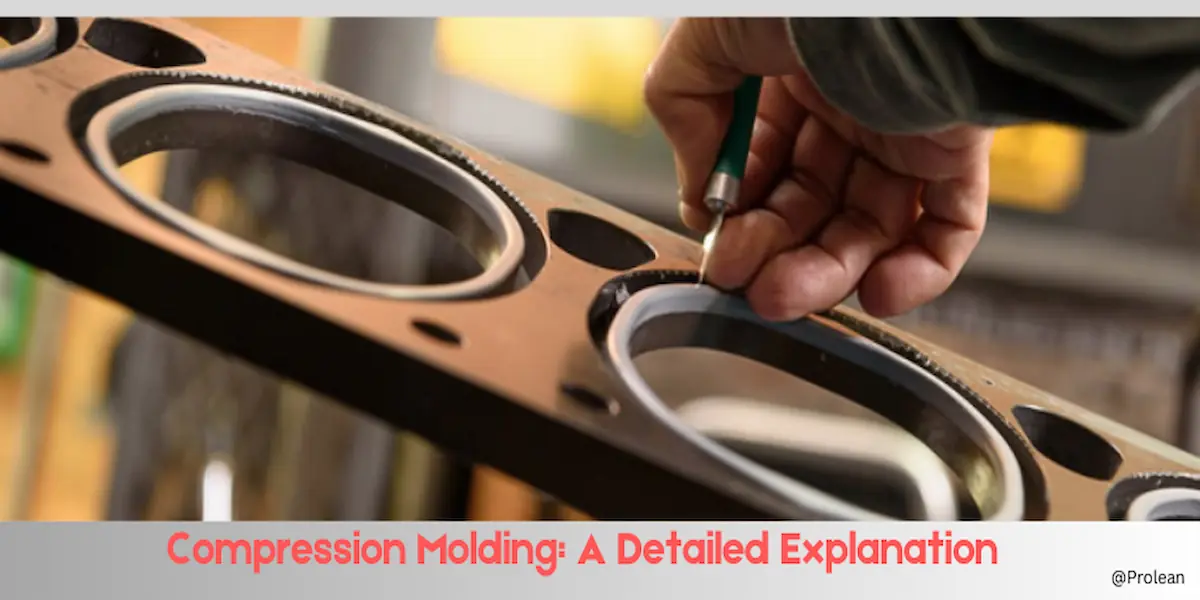
Molding always has been a prominent technology for shaping plastic parts. There are different variations in molding techniques adopted by manufacturers based on material type and desired shape. For example, Injection Molding is ideal for thermoplastics and complex shapes, whereas Compression Molding is suitable for thermoset resins.
The compression molding method includes an open die and compression setup ( hydraulic or mechanical). The thermoset is placed in the pre-heated mold, then the compression mechanism closes it & compresses to force the material inside to flow and fill the cavities.
In this article, we will focus on compression molding. You will get complete insights into the process, importance, compatible materials, pros, cons, and applications by the end.
Fundamentals of Compression Molding
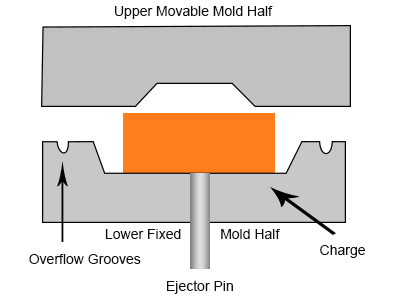
Compression molding process
To understand what is compression molding? Let’s dissect the structure of the compression mold first. It consists of two halves, so the mold can be opened and a measured amount of resins can be placed inside it. Similarly, it can be compressed after closing and the excess material can be seeped out from the joining point of these two mold halves.
Next, here are the sequential steps of the compression plastic molding process;
- Pre-heating of compression Mold
- Material (charge) loading
- Mold Closing
- Heating & Compression of Mold
- Ejection of Parts
- Post Processing and Surface Finish
Try Prolean Now!
Types of Compression Molds
Based on the structure, there are three types of compression molds; open flash, semi-positive, and fully positive.
- Open Flash Mold
As the name suggested, open-flash mold refers to the mold where flashes are formed at the parting line. A slightly more material ( charge) is loaded into cavities. Although the flash requires trimming and other post-processing, the mold design is simple and costs less than other mold types.
- Semi-positive Mold
This type of compression mold combines the features of open flash and fully positive mold, allowing the excess flash to be removed during compression. The excess material is squeezed out into a narrow ring around the part. However, it is more expensive to manufacture and maintain than the other types. Some applications of semi-positive mold include seals, gaskets, and automotive bushings.
- Fully Positive Mold
A fully positive mold contains a cavity size equal to the size of the final part. If the charge is excess, the mold will not be closed. So, an accurate amount of material is loaded into the mold cavity. Consequently, there is no flash and the complete item remains inside the mold. Furthermore, a fully positive mold is ideal for high-precision parts.
Why Compression Molding? The Advantages
The simple tooling setup of the compression molding process is the first importance of this molding technique in plastic product manufacturing, mainly thermosets & rubbers. Unlike injection or other convection molding, it does not require an injection mechanism. Operators or automatic loading systems can open the die and load the charge. Then, the attached compression and continuous heating arrangements force the charge inside to flow inside and take the shape.
Although it might be challenging to mold the intricate shapes, compression plastic molding makes the large-size parts without compromising the structural integrity and original properties.
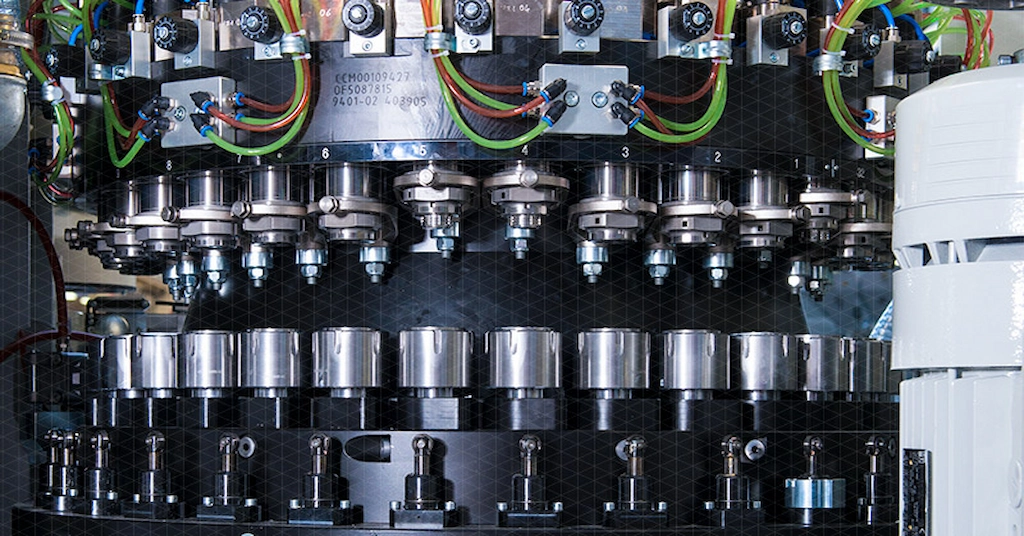
Compression molding machine
Consequently, the simple tooling also reduces the per-part production cost. It can be significantly cost-effective for large & simple parts in medium to high-volume production runs.
We can see the widespread applications of compression-molded parts in various sectors, brake & clutch plates, electrical components, aircraft interior parts, industrial gaskets & seals, etc.
What are the Disadvantages of Compression Molding?
The first disadvantage of compression plastic molding or compression thermoset molding is the production cycle time. Process steps like material loading, compression, and curing increase the cycle time. As a result, the production rate is slower than injection or other molding processes. Subsequently, the compression molds have a lower capability of complex shapes & intricate details.
Here are some critical compression molding plastic disadvantages that are worth considering for optimal results.
- Slower production rates than compression and transfer molding.
- Limited internal geometries, such as internal channels, ribs, undercuts, etc.
- The mold compression also restricts the thin-wall parts ( min. 2mm or above based on material type).
- Flash attached at the meeting position of mold halves, demanding post-processing.
- Compression molding is limited to thermosets, elastomers, & rubbers.
- The uneven pressure distribution can lead to inconsistent & weaker parts.
Applications of Compression Molding
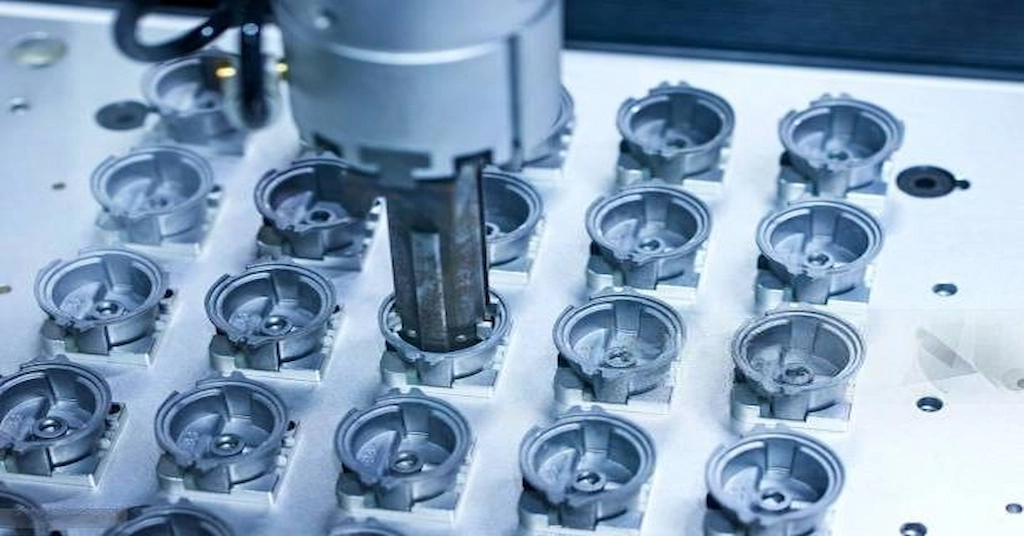
Compression molding application
Compression molding components & products can be found in various industrial manufacturing, automotive, kitchenware, and electrical, which are few to name. The suitable material resin and corresponding tooling and setup make it possible to create diverse shapes based on the required specifications and intended use.
Automotive Components
The size and strength capabilities of compression molding benefit the automotive industry by producing different precise, strong, and durable components. Some examples are brake & clutch pedals, panelboards, valve covers, vibration dampers, etc.
Kitchenware
The thermosets like phenolic resins, silicone, PP, and other materials are used to compress and mold the kitchen items. Heat-resistant cookware handles are made with phenolic compression molding. Subsequently, mealmines are compression molded for dinnerware and serving trays. Other examples are food containers, cutting boards, measuring cups, etc.
Electrical Components
Electrical components like distributor caps and housings for electronic modules benefit from the insulation properties of thermoset materials used in compression. Meanwhile, the compression molding process ensures that these parts meet tight tolerances and precise specifications. Other components are, switch housing, connector bodies, fuse holders, motor end caps, etc.
Industrial Applications
Industrial components like pump housings, gaskets, and seals require strength and other properties to withstand harsh environments and mechanical stress. Meanwhile, compression molding can effectively provide these needs.
Rubber Parts
Rubber compression molding is known for robust, flexible, and resilient rubber parts for industrial, automotive, and consumer applications. Examples: Seals, gaskets O-rings, bushings, vibration dampers, conveyor belts, etc.
Try Prolean Now!
Compression Molding Materials
Thermoets, thermoplastics, rubbers, and elastomers are moldable with the compression molding technique. The thermosets provide high heat resistance, dimensional stability, and electrical insulation. Meanwhile, thermoplastics are easy to process and recyclable.
Table: Common Compression Molding Resins
| Material | Properties | Application examples |
| EPOXY | Adhesiveness, mechanical properties, electrical insulation, etc. | Electrical insulators and connector bodies. |
| PHENOLIC RESINS | High heat resistance, electrical insulation, and dimensional stability. | circuit breaker & switch housings, automotive brake pads, etc. |
| MELAMINE | Surface hardness, thermal stability, and abrasion resistance. | Dinnerware and laminate surfaces. |
| POLYPROPYLENE (PP) | Mechanical toughness, Chemical inertness, and low cost. | Food containers, automotive components, and household items. |
| SILICONE RUBBER | High flexibility, temperature resistance, biocompatibility | Seals, gaskets, kitchenware, medical manufacturing, etc. |
| NATURAL RUBBER | High tensile strength, good abrasion resistance, and flexibility | Tires, vibration dampers, gaskets, etc. |
Related: Injection Molding Materials: Which One Suits Your Needs?
Injection Molding Vs. Compression Molding
The main difference between these two molding techniques and how material is melted and loaded in the mold. The injection molding process uses an injection mechanism, where molten material is injected at high pressure with an attached nozzle. In contrast, the raw materials are loaded into the mold by opening it in the compression molding.
Furthermore, the table below highlights the key Compression Molding vs Injection Molding differences;
Table: Difference Between Compression and Injection Molding
| Features | Compression Molding | Injection Molding |
| Design & Complexity | Simple geometrical parts without any intricate internal features. | It can mold highly complex and intricate details |
| Material Compatibility | Thermosetting polymers & rubbers | Thermoplastics and a few thermosets & metals |
| Tooling Cost | Lower | Higher, best for high volumes |
| Precision | Good Precision | High, tight tolerances |
| Surface Finish | Sufficient for general uses ( Ra 1.6 and above) | Excellent smoothness( Ra 0.8 or above) |
Challenges and Possible Molding Defects
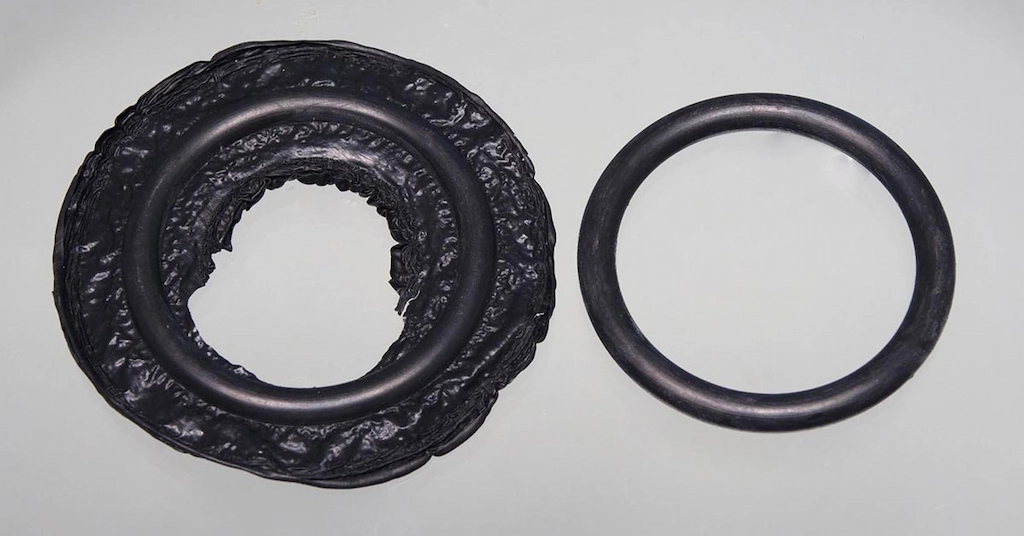
Defective compression molded parts
So far, we discussed various benefits, importance, and uses of plastic compression molding and rubber compression molding. However, it is not free from risk defects and process challenges. Some of the defects are similar to Injection Molding Defects like voids, bubbles, and wrapping. Additionally, there are also some specific issues like incomplete filling, flash formation, and curing defects.
- Incomplete Filling: Insufficient material or lack of pressure and heat might cause the incomplete filling of the mold.
- Flash Formation: This can occur due to excessive material, improper clamping pressure, or worn mold edges. So, flash tends to leak from the parting line.
- Warping: This defect happens when parts deform after being removed from the mold, often due to uneven cooling or residual stresses within the material.
- Sink Marks: The material shrinkage during curing is the main reason for sink marks, depressions, or dimples that appear on the surface.
- Bubbles or Voids: These defects can occur due to trapped air or gases during the compression process. Voids weaken the part’s structural integrity.
To tackle these challenges and mitigate the defects, you need to follow some strategies, accurate material measurement, consistent temperature and pressure, design optimization to facilitate material flow, and quality control.
Mold Your Plastic Parts at ProleanTech
At ProleanTech, Our Injection Molding Service can accommodate thermoplastics, thermosets, rubbers, and even some metals and alloys. The advanced molding equipment and in-house die manufacturing facilities us to provide precise and custom molding solutions for a range of plastic parts.
Furthermore, our qualified operators and production engineers with over a decade of experience can handle any injection molding project regardless of complexity and tolerances. You can send the design to us, we will get back to you with an accurate quote and additional information.
Try Prolean Now!
Conclusion
The compression molding method is ideal for thermoset and rubber parts. The appropriate die design, uniform temperature & pressure implications, and controlled curing result in the optimal result for diverse applications, from automotive to industrial parts. Additionally, the selection of material also affects the final quality of molded parts. You can choose the right material type based on the required properties and functionality.
FAQs
How does compression molding work?
This molding method involves placing a pre-measured amount of material into an open & heated mold cavity. Then, the mold is closed, and pressure is applied, causing the material to flow and fill the mold. Next, solidification forms the shape.
Is compression molding cheaper than injection molding?
Yes! Compression molding typically has lower tooling costs compared to injection molding due to simple process and tooling.
What materials can be compression molded?
Thermosetting polymers like phenolic resin, epoxy, melamine, and certain thermoplastics and elastomers are compatible with compression molding.
Is it better to use compression molding for thermosets?
Yes, compression molding is well-suited for thermosets because it provides the necessary heat and pressure to cure these materials uniformly.

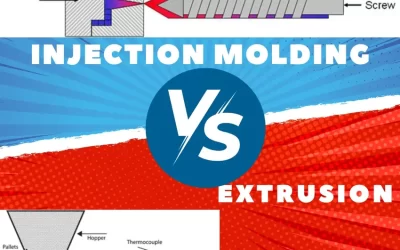
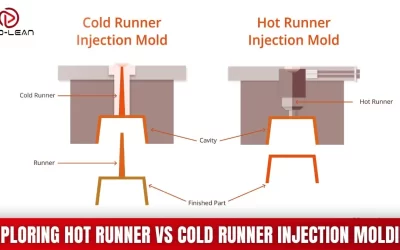
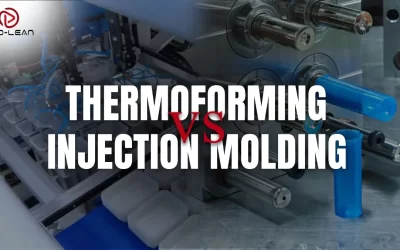
0 Comments